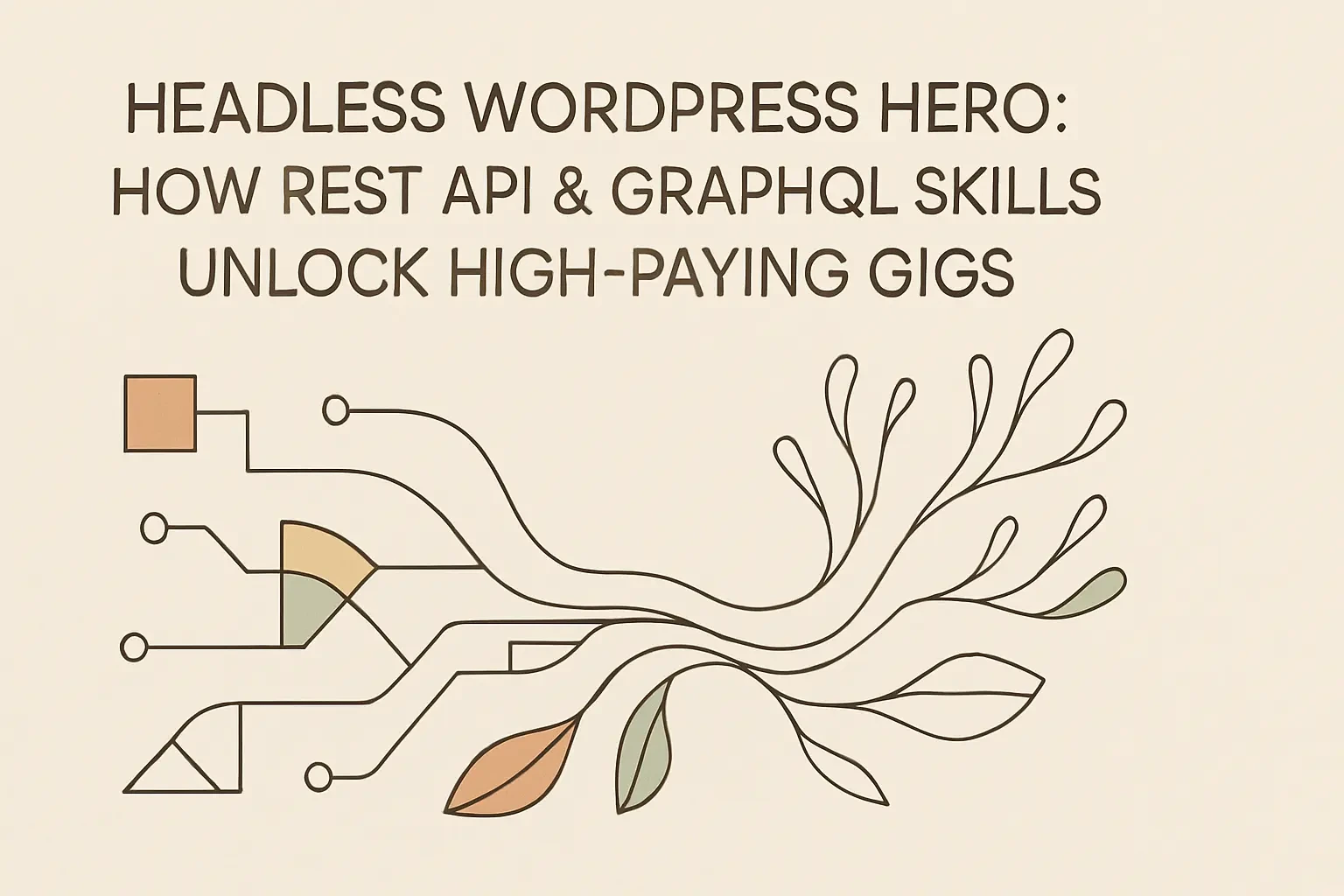Headless WordPress Hero: How REST API & GraphQL Skills Unlock High-Paying Gigs

Headless WordPress Hero: How REST API & GraphQL Skills Unlock High-Paying Gigs
What is Headless WordPress?
Decoupling the Frontend from the Backend
Pros and Cons for Freelancers and Clients
Getting Started with the WordPress REST API
Core Endpoints and What They Do
Authenticating Requests and Handling Nonces
Creating Custom Endpoints for Your Projects
The GraphQL Alternative: A More Efficient Approach
Why GraphQL? Understanding the Difference from REST
Setting Up WPGraphQL
Writing Your First GraphQL Query
Building a Frontend with a Headless Backend
Popular Frameworks: Next.js, Nuxt.js, and SvelteKit
Example: Fetching Posts with a JavaScript Framework
How to Market Your Headless WordPress Skills
Finding Clients Who Need Headless Solutions
Positioning Yourself as a Specialist, Not a Generalist
Conclusion
References
Headless WordPress Hero: How REST API & GraphQL Skills Unlock High-Paying Gigs
What is Headless WordPress?
Decoupling the Frontend from the Backend
Pros and Cons for Freelancers and Clients
Getting Started with the WordPress REST API
/wp-json/wp/v2/posts to any WordPress site URL, and you'll see a JSON response containing the latest posts. That's the REST API in action, no setup required.Core Endpoints and What They Do
/posts endpoint is probably where you'll start. It returns blog posts with all their details - title, content, author, categories, tags, and featured images. You can filter results, search for specific content, or paginate through large sets of posts./pages endpoint works similarly but for static pages. Then there's /media for images and files, /users for author information, and /categories and /tags for taxonomies. Each endpoint accepts parameters to customize what data you receive.?_embed to your post request includes author details, featured media, and taxonomy information automatically. This reduces the number of API calls and speeds up your application.Authenticating Requests and Handling Nonces
Creating Custom Endpoints for Your Projects
register_rest_route() function to define your endpoint, specify what HTTP methods it accepts, and provide a callback function that returns your data.The GraphQL Alternative: A More Efficient Approach
Why GraphQL? Understanding the Difference from REST
Setting Up WPGraphQL
/graphql endpoint to your site. But more importantly, it includes GraphiQL - an in-browser IDE for exploring your GraphQL schema and testing queries. This tool alone accelerates development significantly.Writing Your First GraphQL Query
featuredImage { node { sourceUrl } } to your query. Want only posts from a specific category? Add a filter parameter. The query language is intuitive enough that even non-developers can understand what's happening.Building a Frontend with a Headless Backend
Popular Frameworks: Next.js, Nuxt.js, and SvelteKit
Example: Fetching Posts with a JavaScript Framework
getStaticProps to fetch posts at build time. This function runs during the build process, calls your WordPress API, and passes the data to your component. The result is a static HTML page that loads instantly.useEffect or libraries like SWR. These approaches fetch fresh data after the page loads, ensuring users always see current content while maintaining fast initial page loads.How to Market Your Headless WordPress Skills
Finding Clients Who Need Headless Solutions
Positioning Yourself as a Specialist, Not a Generalist
Conclusion
References
Posted Jul 6, 2025
Ditch the monolith. Learn how leveraging WordPress as a headless CMS with the REST API and GraphQL can make you a highly sought-after, high-earning freelancer.











